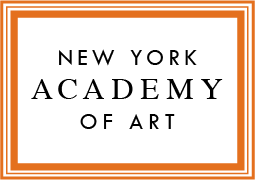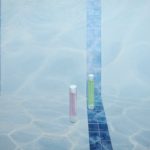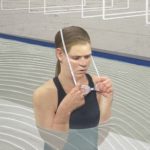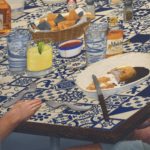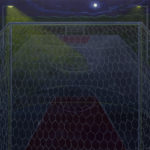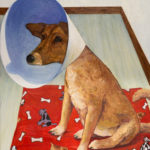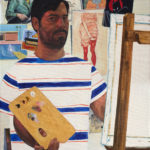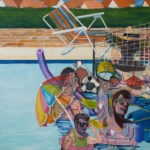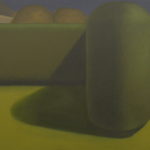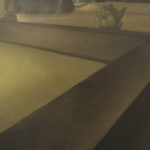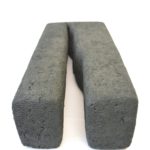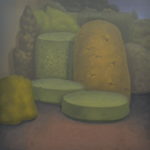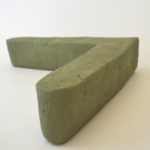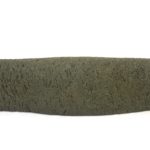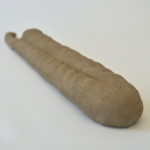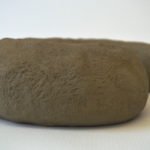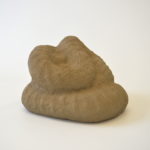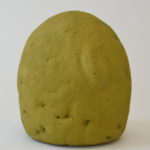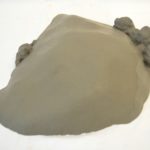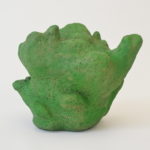It’s a MAD, MAD, MAD, MAD Panel
For over sixty years MAD has been introducing some of the most outrageous draftsmen to generations of young people hungry for absurd humor, extraordinary art and a poke in the eye of complacency. This panel brings together Al Jaffee, Sam Viviano, Liz Lomax and Peter Kuper all of whom have continued the MAD tradition of great drawing in the service of an elbow in the ribs. The panelists will explore the history and future of MAD magazine and the role of cartooning in popular culture.
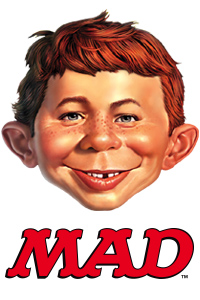
Contemporary Stone Carving in the Shadow of the Masters
Presented by Jonathan Tibett and ABC Stone the panel, consisting of Steve Shaheen, Dionisio Cimarelli, Brice Esso and Jiannan Wu will focus on contemporary stone carving and the effect of working in the shadows of the masters.
Academy Summer Residencies 2016: Giverny
Our third essay from Giverny, France comes from Kristina Reddy MFA 2017.
Every morning I would wake up with the sun – happy, and excited to start the day. And who wouldn’t be, if they awoke in a beautiful home, situated amidst gardens and chirping birds! It is impossible not to see the French countryside as somehow “romantic.”
I think the most wonderful quality that is present here, in Giverny, is tranquility. Away from all the noise and business that we are so used to in New York City, Giverny welcomes us with peace. There is space to think, to wonder, and to just simply BE. It is precisely this nurturing environment that energizes me and gets me excited about going to the studio in the mornings.
I arrived to the residency with the intention to push through all my comfort zones, and to allow myself to make mistakes. Experimenting with acrylics and acrylic mediums, often left me feeling out of control, but also helped me to discover interesting things along the way. I became more confident with my tools, and the way I applied paint. I tried various surfaces—rice paper, duralar, and fabric board—adjusting the how and what kind of material combination worked best for what purpose. Of course, I also painted in oils, working fast so as to leave enough time for the paintings to dry. This process gave me freedom and allowed me to learn about my temperament, resulting in active brushwork and paintings that looked more alive.
Some of the work produced at the residency.
In regards to subject matter, my goal was to paint a series of snapshots of nature, both the terrain and the aquatic environments, and to capture something of life that did not need literal description. I focused on segments of flowers, streams, etc., and tried to embody the essence of the whole in the snapshot of its part. Everything in nature – every flower, every person – exists only as a part of a whole. There is an entire universe living inside each organism. My work was fed by the desire to understand and reconcile the natural and the artificial components of our existence, through the practice of abstracting the organic forms.
Inspired by the Patterns in the Stream
Inspiration in Giverny was inexhaustible—it was everywhere! One day, on a walk up the hill, behind the village, we discovered a group of cows. The animals were so beautiful and impressive that I just had to paint them! We were also lucky to have found some ostriches, kangaroos, and llamas…all, of course, were “natives” to the region!! Once, Matt even found a petite relative of a tarantula, visiting our home…but that is another story.
Cows, Ostriches, and Llamas
With permission from the Claude Monet Foundation, we were able to access the Monet’s gardens and paint directly from the vibrant and beautiful flowers growing there. I took many photographs of the creek and the water lilies—the running water and the plants that were swaying underneath. These became my primary inspiration.
Painting at the Flower Garden
The Lily Pond
Three weeks does not seem like a long time, but it has brought my classmates and I closer together. We worked hard, inspired and encouraged each other, cooked and ate together, and shared many beautiful moments along the way. And while our time in France, is almost over, I look forward to continuing our journey back in New York.
To everyone we have met during our stay at Giverny: Thank you! You have truly enriched our experience, and we will cherish it forever. Special thanks to Céliane Ainaron, Jan Huntley, Miranda Fontaine, and Véronique Bossard, for taking such a good care of us!
Merci & À bientôt!!
Studio Visit with some of the attendees featured here – Matt, Kurt, Jorge, Kristina, Jan, Dante, Miranda, Lewis, Naudline, François, Ines, Dominic, Charlotte, and Aleksandra
New York Academy of Art students on the road!
2016 Chubb Fellows Exhibition
Each year, the Academy selects three outstanding graduating MFA students as Chubb Postgraduate Fellows. Generously supported by Chubb Personal Risk Services, the year-long fellowship is the highest honor the Academy bestows and covers studio space, teaching experience and a stipend. Kathryn Goshorn, Esteban Ocampo, and Sarah Schlesinger were selected upon their graduation in 2015, and on September 6, the Academy will exhibit the works each artist created during the past year. The show marks the beginning of each artist’s promising career and will run from September 6 – 21, with an opening reception from 6-8 pm on Tuesday, September 6.
- Kathryn Goshorn
- Kathryn Goshorn
- Kathryn Goshorn
- Esteban Ocampo-Giraldo
- Esteban Ocampo-Giraldo
- Esteban Ocampo-Giraldo
- Esteban Ocampo-Giraldo
- Esteban Ocampo-Giraldo
- Esteban Ocampo-Giraldo
- Sarah Schlesinger
- Sarah Schlesinger
- Sarah Schlesinger
- Sarah Schlesinger
- Sarah Schlesinger
- Sarah Schlesinger
- Sarah Schlesinger
- Sarah Schlesinger
- Sarah Schlesinger
- Sarah Schlesinger
- Sarah Schlesinger
- Sarah Schlesinger
- Sarah Schlesinger
- Sarah Schlesinger
Academy Summer Residencies 2016: Giverny
Giverny is an inspiration. I paint both the landscape and the figure, but here the landscape is such that to paint anything else would seem to miss the point. It is enchanting.
Academy Summer Residencies 2016: Beijing
During my first week I tried to get to know the real Beijing – no tourist attractions, just get to know it from inside out and discover beauty in everything. The greyness of pollution can be depressing, but as an artist you can fall in love with greys. As a result, Beijing landscapes became animated in color to me. Having found my subject and inspiration I dove into work – I wanted to meet the expectations of the Academy that had given me this unique chance to be in Beijing. Plus, I could exhibit my art at a Beijing gallery!
During my first year of school, I used to photograph unusual compositions that I found fascinating and create landscapes and cityscapes from them. The pieces were often visually abstract, but on closer inspection one would realize they’ve been crafted from real-life instead of imagination. In China, I have decided not to use photographs but my memories and imagination whilst continuing to focus on landscape, architecture, space, sky and light. This was a new step for me and the approach definitely took more time. There was quite a number of times that I would sit in the studio for hours just staring at my work, ruminating about what to do next. My mind was clogged up with thousands of ideas of how to best project my impressions of the city.
Academy Summer Residencies 2016: Russia
Academy Summer Residencies 2016: Giverny
Day 2
Day 14
Academy Summer Residences 2016: Russia
Our third dispatch from Russia is from Alex Merritt MFA 2017, who describes his week-long experience painting a street mural in St. Petersburg.
My time in Russia has been an experience which is hard to find words for. These two cities are filled with a long history that is amazing, beautiful, and tragic all at the same time. Some moments I will never forget will include staying in Dostoyevsky’s neighborhood while reading The Idiot, drawing in the Rembrandt room at the Hermitage, and eating pelmeni and borscht in an old bar with a kalashnikov hanging over the kitchen door. Seven days away from leaving thanks to a series of chance occurrences including the wonderful Amina Kerimova visiting us for a day, and then herself running into some old friends, I was afforded the opportunity to paint a mural in Saint Petersburg. So here is what happened.
Day One
It is starting to rain and I have been painting for about seven hours now. It rains frequently here, which is a critical point I did not factor in when I began to paint this mural. Amazingly, spray paint actually still works in the rain here due to the fact that the humidity generally stays around 50 percent, even when it’s pouring. When humidity starts hitting north of 60/70 percent spray paint tends to clot as it comes out of the nozzle, making it nearly impossible to work with. Still the rain is telling me it is time to step back and look at what is happening.
Wow, it is not good. It’s not even bad. Actually it is outright terrible. At this point I suddenly become overly aware of my surroundings, like the man up on a tightrope who makes the mistake of looking down.
Down in the courtyard there are maybe fifteen to twenty guys standing around motorcycles looking up, at me. I cannot be sure, but the general reaction is clearly unimpressed. I even sense, at least in some, a touch of anger. I must get down from here, get home and regroup. When I bought the paint I wasn’t thinking and my choices were bad. There was no cohesive strategy for how to deal with the space. I just jumped in, and tried to impose a poorly planned image on a rather gnarly wall — and I failed.
As I walk home my thoughts frantically jumped between somehow making this work, and never going back.
Day 2
I wake up and decide to give it another shot. I make a run to the paint shop aka the graffiti market, and a local hardware store to get house paint, rollers, and some brushes. Now with proper materials, I am heading back to the Co-op Garage with a fresh batch of enthusiasm.
When I arrive I see that last night someone destroyed, or at least attempted to destroy the mural.They even took the trouble of smashing a few holes in it, and carving deep quarter inch gashes into the surface. I quickly discuss this new development with the owner who seems clearly upset by my being disrespected, and then I get back to it.
So here I am back up on the ledge, and I realize that maybe the universe is telling me something. Time to start over. I have less than four days left, so no time to dwell on things. I take a bucket of blue house paint and just start pouring it on the wall. Next I start drawing into it with a paint roller. Just as things get moving the sky turns dark, and it begins pouring.
Day 3
When I arrive, I instantly realize that this new direction I have taken is far better than the previous. Also, I notice the owner is up on a scaffolding changing the sign over the parking lot. The new sign reads “When you have nothing left to burn, you must set yourself on fire.” When he finishes, he looks up at me and gives a nod and a smile. After a cappuccino, and the best pancakes I have ever tasted, I get back to work.
Day 4
Things are moving fast. Quick trip to graffiti market, and the hardware store to pick up some more paint. I get to the wall and set up, then it starts pouring buckets.
I try to wait out the rain for about two hours. I start sketching out ideas for how I can really get this to where I want it. Finally, I give up and decide to head home, because it feels like the day is lost. I spend a few hours hanging our with Anders Fernbach back at home. At around 8:30 it stops raining and I head back.
Now I am losing daylight fast so I block in the second figure with a paint roller and a giant brush, and throw giant streaks across the entire composition to keep things moving.
Day 5
I get to the mural and start painting fast. The weather is nice at the moment, but I can feel it in my bones that rain is coming soon. I start thinking about how I can unite the composition as a whole, and get it to a place where I can live with it- because in less than two days I am flying out of Saint Petersburg to Amsterdam. I start working on correcting obvious problems and change the entire background completely. As the day is winding down it hits me like a ton of bricks, I’ve overworked it. Now the whole thing has busted flat. I walk home flipping through the pictures on my phone realizing that the entire composition has stopped moving and turned static. I need to get back asap and fix this.
Day 6
As soon as I arrive I start throwing paint from a bucket all over the wall, to just mess it up and create some action again. There is a large party happening down below, with groups riding in and on loud motorcycles that set off all the car alarms in the parking lot. About every ten minutes different people climb up to talk and pose for pictures with me. I have to keep focusing on the task, and not get sucked into the party that is looking more tempting with every passing minute. At about six o’clock it hits me — the thing is done.
Of course, if I had 3 more weeks, I would not finish now. If I could I would try to make this place into my own Sistine Chapel. But that’s never how it works. If I have learned anything, it is that in a situation like this if you can leave something in a place where you are happy with it, that is a huge success. When I came to Russia my main goal was to see as much art as I could, and do a lot of drawing. The idea of painting and leaving behind a mural never entered my mind for a second (OK, maybe a second) but I brushed it off as wild fantasy. Yet somehow, mostly by dumb luck it happened. And this mural that began as a complete disaster, became one of the best experiences of my life.
Academy Summer Residencies 2016: Beijing
